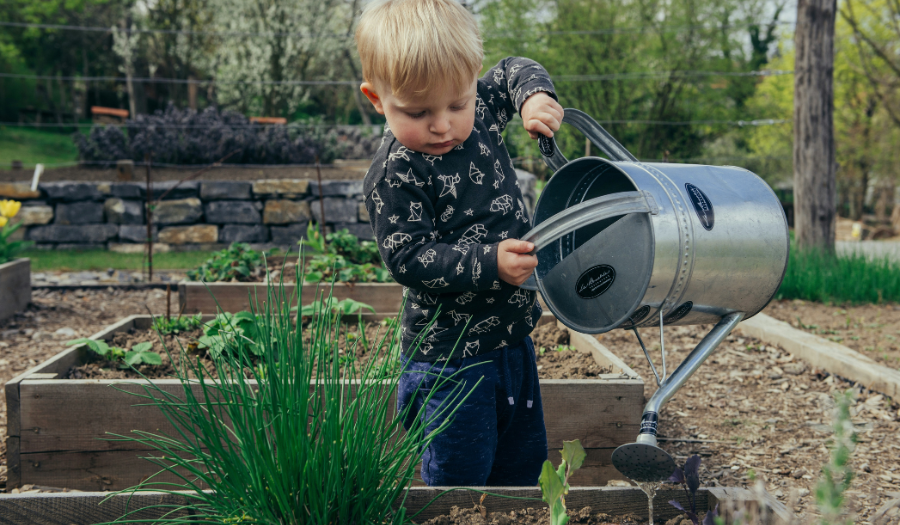My Gramma G had a green thumb. She could grow and keep alive anything that could and did grow roots. That traditional poinsettia she bought at Christmas? Still alive and thriving at Easter… and then the next Christmas, and the one after that.
The old breezeway of her little ranch house had shelf after shelf of spider plants, jade plants, and other odd little plants tucked carefully into ceramic pots. The yard? A side garden of brown-eyed Susans, daisies and herbs. A traditional garden with more tomatoes, green beans and more vegetables than you could imagine was just steps from the back door. Pansies, geraniums and marigolds lined the walk by the front porch. The wife of a farmer and World War II veteran, Gramma could and did grow everything and anything.
It’s just too bad her granddaughter got approximately NONE of these talents and my thumb is more dirt gray than garden green.

With it being National Garden Month though, I’m feeling the itch to get going and while I know I probably won’t ever have the garden my Gramma did, it never stops me from trying. Every year I try and fight the good fight against the hickory trees that make our soil uninhabitable for tomatoes, the deer that eat everything, raccoons that burrow under every net, cage or trellis I buy to bite every bean, and my own overzealousness at wanting to fit everything into too small of an area.
It’s just something about watching those little plants grow and mature through the spring and summer months that always compels me to try. But, with the wealth of the Internet and a quick discussion with the wonderful staff at a local garden center, I feel like this year could be the year. I’m armed with a few new tips, soil additives and some new deterrents to keep the critters away from what will hopefully be a productive growing season. Maybe some of these will help you take advantage of National Gardening Month, too, so that we’re all enjoying the fruits (and veggies!) of our labors come summer and fall!
Prepare your soil.
Eggshells, coffee grounds, grass clippings, leaves and even small sticks and straw make great garden compost. Adding this to your soil versus just a bag of soil from the big box store can feed your baby plants for months during the growing season.
Test your soil.
Buying a soil kit and finding out the composition of your soil can save you time and money as you’ll know what minerals and nutrients your soil needs before you plant anything. A garden center associate can help you find a kit, or you can check out any of the big box stores on your own.
Prepare and clean your gardening tools.
Clean tools are easier to use and safer when cutting back old plants and vegetation. Replace rusty, chipped or nicked tools, or garden gloves with holes for new ones that will protect your hands and skin while you work.
If you live in a cold area, start seeds inside using small garden kits, drainable plastic pots or even eggshells.
Then you’ll be ready to transplant outside when the weather is better. Plus, it’s a great activity for small children to help with!
Be sure to buy varieties of plants and seeds that work well in your yard.
Consider sunlight, planting times, watering schedules and even harvest! You don’t want to be away on vacation when all your zucchini, tomatoes or green beans are ready for picking.
Lastly, as Gramma always said, “Don’t overthink it. Have fun with it.” Happy gardening, everyone!













